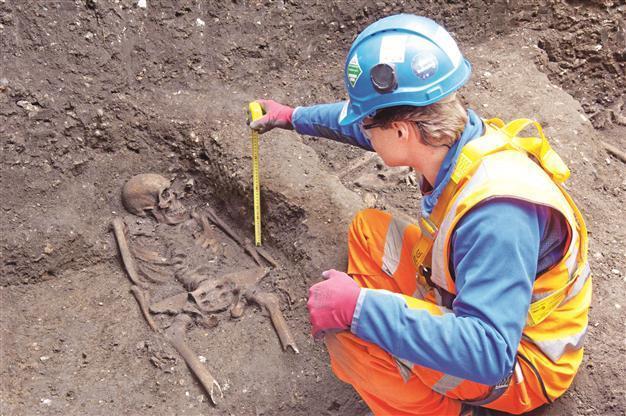Rail dig may reveal Black Death graves
LONDON - Reuters

Construction workers building a new railway in London have unearthed 13 skeletons believed to be victims of the Black Death plague 650 yars ago. AFP photo
Archaeologists said on March 15 they had found a graveyard during excavations for a rail project in London which might hold the remains of some 50,000 people killed by the “Black Death” plague more than 650 years ago.Thirteen skeletons laid out in two neat rows were discovered 2.5 meters below the road in the Farringdon area of central London by researchers working on the 16 billion pound ($24 billion) Crossrail project.
Historical records had indicated the area, described as a “no man’s land”, had once housed a hastily established cemetery for victims of the bubonic plague which killed about the third of England’s population following its outbreak in 1348.
“At this early stage, the depth of burials, the pottery found with the skeletons and the way the skeletons have been set out, all point towards this being part of the 14th century emergency burial ground,” said Jay Carver, Crossrail’s lead archaeologist.
Limited records suggest up to 50,000 victims were buried in less than three years in the Farringdon cemetery as the plague ravaged the capital.
The archaeologists hope that the skeletons, which have been taken away for scientific tests, will shed light on the DNA signature of the plague and confirm the burial dates.
Building works for Crossrail, a new railway link under central London and Europe’s largest infrastructure project, have already uncovered skeletons from more than 300 burials at a cemetery near the site of the notorious Bedlam Hospital for the mentally ill in the heart of London.
















